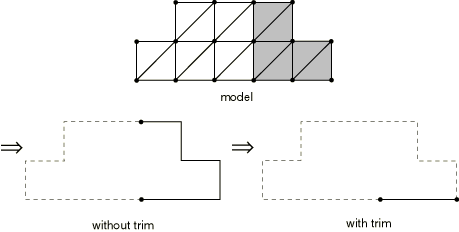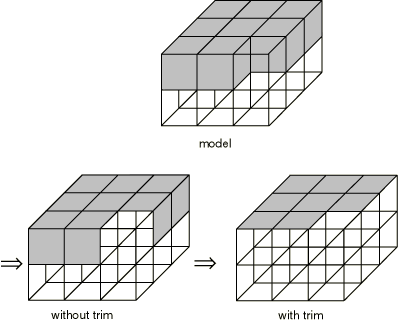Elements tested
C3D4
C3D8
CPS3
CPS4
ProductsAbaqus/Standard Elements testedC3D4 C3D8 CPS3 CPS4 Problem descriptionThe input files ele_trim2d.inp and ele_trim3d.inp verify the automatic surface generation capability and trimming of surfaces. When a surface is defined without specifying the face identifiers of elements, the faces in the element set that are on the exterior (free) surface of the model form the surface. This definition may result in the inclusion of unwanted faces. Surface trimming provides the user with some basic control over the extent of open surfaces created on solid element meshes. The input file ele_trimdef.inp tests the default trimming option. Abaqus will, by default, trim all contact surfaces except main surfaces involved in a finite-sliding contact pair. Results and discussionSome of the examples from the tests are shown below. They illustrate the recursive elimination of the ends of two-dimensional surfaces and the edges of three-dimensional surfaces. Trimming has no effect on closed surfaces (ones with no ends or edges). In each example the shaded elements in the model are used as the element set in the surface definition. The automatic surface generated and the surface generated by trimming are shown separately. Trimming of two-dimensional surfacesTrimming of three-dimensional surfacesDefault trimming of contact surfacesThe default trimming option was investigated for surfaces involved in small-sliding, finite-sliding, and both small- and finite-sliding contact pairs. Input files
Figures        | |||||||